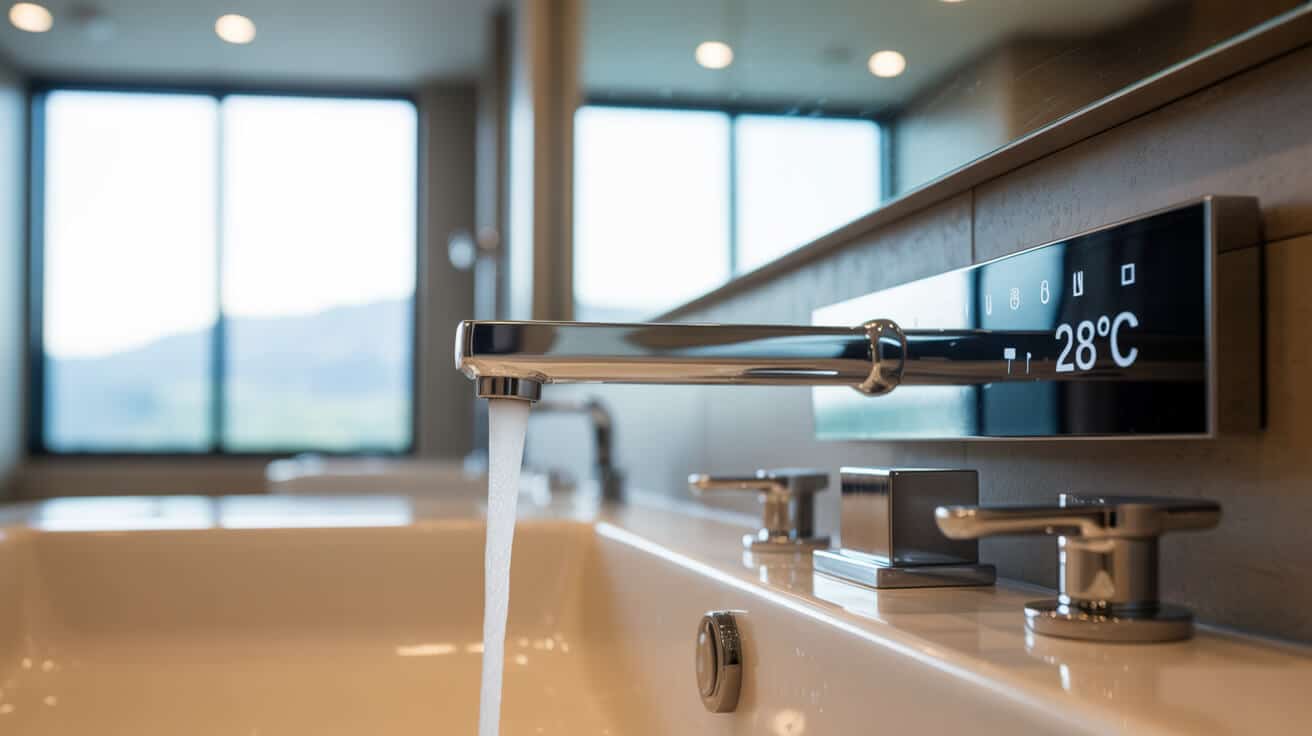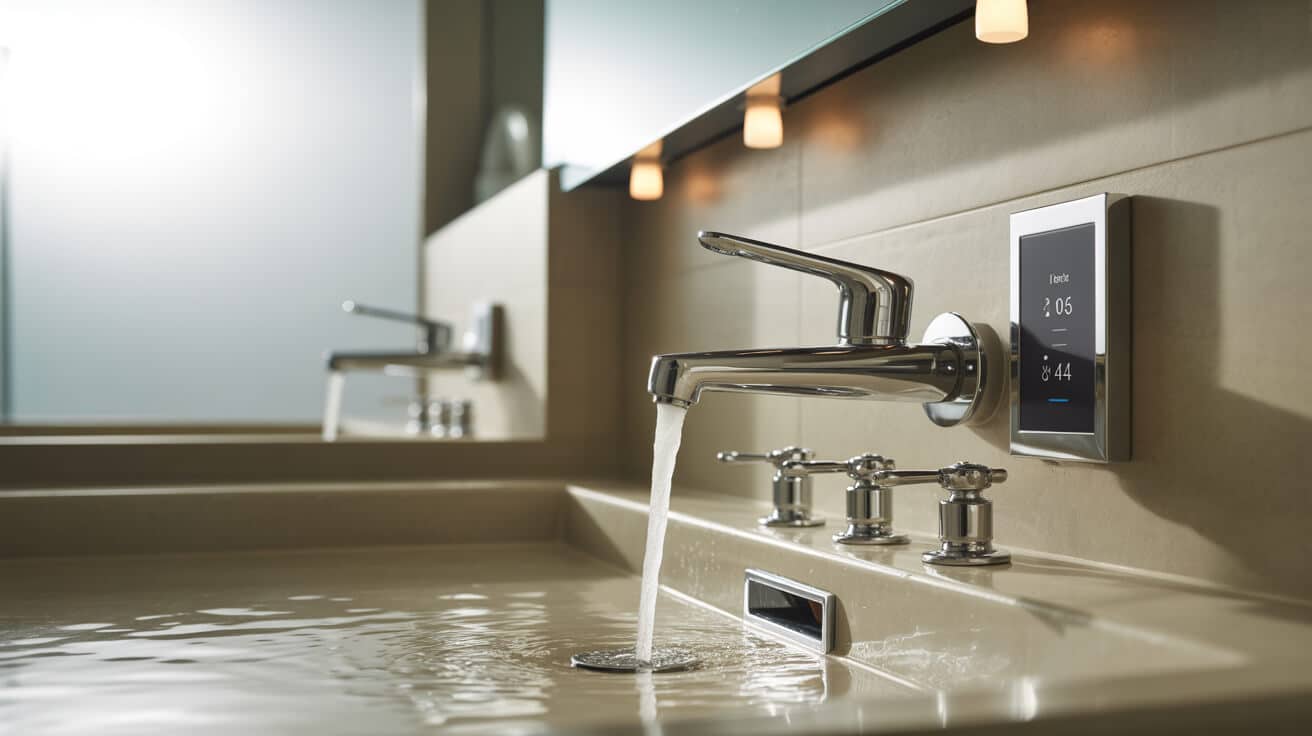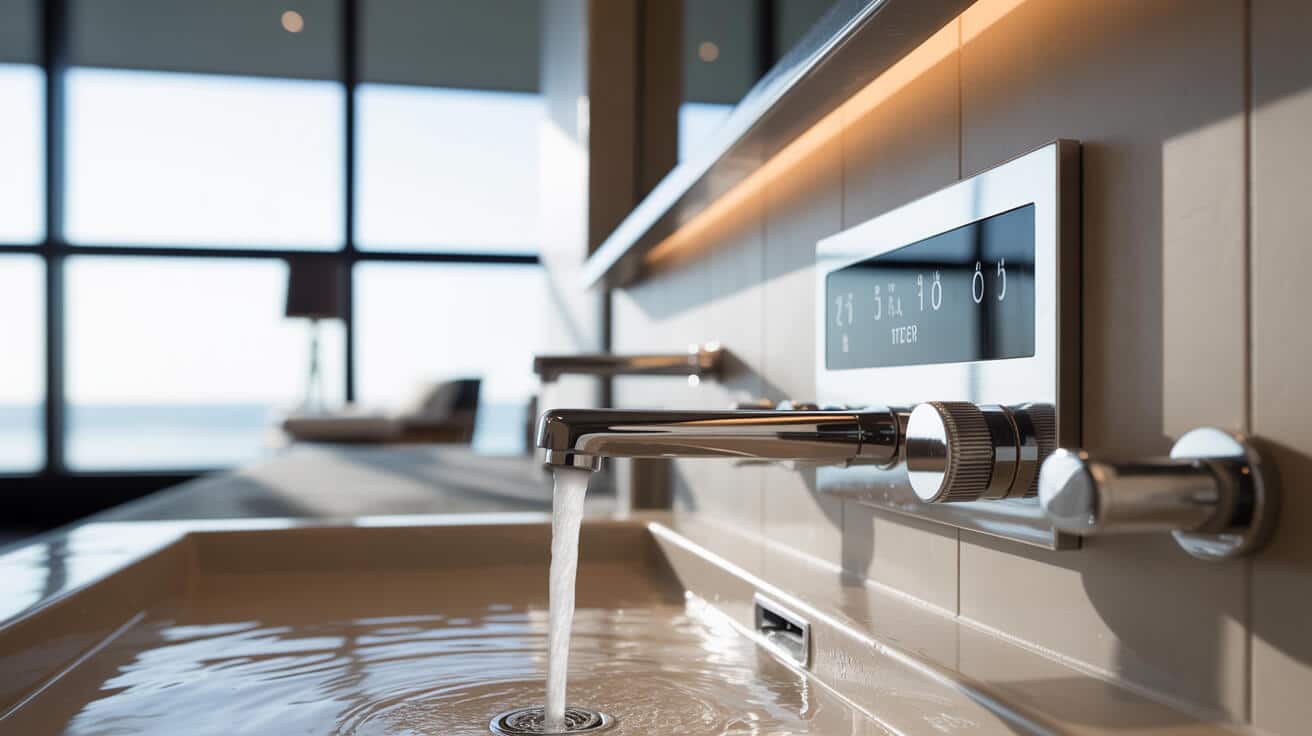Across the spectrum of residential, rental, and commercial properties, programmable hot water controls transform the way homes, landlords, and businesses interact with energy use and regulatory requirements. By removing guesswork and manual intervention from day-to-day routines, they empower you to reap savings, reduce waste, and enjoy the peace of mind that comes from system responsiveness and legal certainty. In a market increasingly defined by rising regulation, growing environmental consciousness, and the widespread adoption of digital infrastructure, these controls have evolved from luxury upgrades to essential system components, quietly underpinning the functionality and financial health of your property or organisation.
The introduction of programmable logic in water heating automation marks a silent but fundamental shift. Your comfort, operational resilience, and repair risk hinge as much on sophisticated control technology as on valves and pipes. For installers and property professionals, programmable controls represent a convergence point for product innovation, regulatory compliance, and evolving expectations—where trust, transparency, and technical mastery redefine service in the era of intelligent infrastructure.
Etymology or name origin
The lineage of programmable hot water controls traces back to early “timers” or “timeclocks”—mechanical settings first designed to automate the on/off cycling of immersion heaters and boiler-fed cylinders. As technology advanced, the lexicon expanded: “programmer” became the UK industry norm for a device capable of managing both hot water and heating circuits, while North America often retained the all-encompassing “thermostat.” The word “controller” came to define a broader class of devices, sometimes integrating environmental feedback, adaptive intelligence, or remote connectivity. Modern controls leverage nomenclature such as “scheduler,” “digital programmer,” or “learning thermostat,” reflecting evolution in function and user engagement.
Regional and market-specific terms remain in current use, each expressing a subtle emphasis—on technical specificity, control scope, or integration level—that mirrors the evolutionary arc from manual intervention to adaptive, digitally mediated systems.
Overview / context
Automated hot water scheduling sits at the intersection of building comfort, operational safety, energy strategy, and statutory duty. Programmable controls encode daily, weekly, or event-triggered logic, activating heating equipment only as needed and freeing you from the burden of manual toggle or oversight. Their influence stretches from single-family dwellings—where users seek predictable morning showers and lower energy bills—to complex facilities and housing providers wrestling with compliance, asset longevity, and tenant satisfaction.
In domestic environments, programmable controllers create seamless synchrony between lifestyle and system operation, enabling you to adapt provision for work-life rhythms, school holidays, or occupancy changes with minimal friction. Within commercial estates and managed portfolios, you gain granular command over availability, peak/off-peak optimization, and maintenance coordination, ensuring your compliance position is preserved even amid staff turnover or asset handovers.
Programmable controls now operate as central nodes in multi-system environments, bridging old and new infrastructure while cultivating a framework in which plumbing and heating professionals, including providers like Plumbers 4U, can deliver proactive, customer-centric service. Their implementation reflects both regulatory nudge and end-user pull toward operational efficiency and clear lines of responsibility.
History
Origins
The journey began with mechanical timeclocks, simple yet transformative in reducing wasted energy and human error. Early hot water timers required you to set pins or segments on a dial, with minimal granularity and single-channel function. The system offered the vital promise of automation but demanded constant vigilance—outages and seasonal changes necessitated manual resets, and programming changes required physical adjustment.
Industrial emergence
With the spread of domestic and commercial electronics, clockwork gave way to digital programmers in the late 20th century. The new generation delivered multi-event scheduling, clear LCD displays, memory backup, and enhanced safety features, including the integration of cylinder-based thermostatic logic. Programming modes were expanded to allow distinct cycles for weekdays and weekends, holiday settings, synchronised heating schedules, and multi-channel support. This era saw the separation of immersion and boiler operation, driving a step-change in control and efficiency. Service teams began to incorporate routine controller testing and user education as a core dimension of commissioning.
Contemporary evolution
Today’s programmable controls occupy a digital universe defined by connectivity, intelligent feedback, and user-centric adaptation. Learning algorithms, remote interfaces, and self-diagnostic routines have joined the feature set. UK and EU regulations mandate sophisticated schedule and feedback functions, with Boiler Plus and Part L requiring minimum standards of energy efficiency and user programmability. In practice, programmable hot water controls now feature open communication protocols, cloud-based scheduling, automatic legionella protection cycles, and flexible integration with hybrid or renewable energy systems. For companies such as Plumbers 4U, programmable control installation is embedded within the core delivery of modern plumbing and heating upgrades.

Concept / description
A programmable hot water control integrates hardware, firmware, and user-facing logic, acting as a mediator between user preference, building physics, and safety mandates.
- Interface: You interact via dials, push buttons, tactile keypads, or increasingly, touchscreens and app-driven graphical menus. Clarity and accessibility are prioritised, especially in multi-user or compliance-critical environments.
- Logic: The control core—operating as a microcontroller or logic chip—executes programmed schedules, managing multiple on/off events and handling overrides.
- Sensors: Negative Temperature Coefficient (NTC) thermistors or tank-mounted thermostats relay system temperature, triggering cut-off or reheat cycles only within precise parameters. Some controls also process occupancy signals or weather data.
- Outputs: Relays, solid-state switches, or digital interfaces activate pumps, valves, immersion elements, and alert circuits, interfacing with S-Plan (separate valve) or Y-Plan (three-port valve) wiring schemes.
- Feedback and safety: Status, alerts, and diagnostics are presented via display, indicator LED, audible signal, or wireless notification—allowing rapid detection and remedy of schedule errors or hardware malfunctions.
- Override and adaptation: Instant override or “boost” options enable on-demand hot water outside defined schedules, ensuring operational agility.
This arrangement supports reliability and the nuanced requirements of property managers, homeowners, and compliance officers alike.
Functionality / purpose / applications
Programmable hot water controls deliver a suite of functions whose orchestration directly influences your comfort, financial outlay, and safety posture.
- Customised scheduling: Tailor hot water production to actual use patterns: morning showers, evening kitchen routines, or maintenance sanitation cycles.
- Cost control and efficiency: Only heat as much water as needed, when needed—reducing standing losses and maximising off-peak energy advantages.
- Risk management: Schedule temperature boosts for legionella control or integrate mandated compliance cycles, providing safety for your residents, tenants, or employees.
- Remote and multi-zone management: Adjust schedules or system states without site visits, facilitating portfolio-wide coordination and rapid response to operational changes.
- User accessibility: Large displays, voice-enabled controls, and tactile feedback ensure equitable access for all users, regardless of physical constraint.
- Auditability: Continuous event recording supports your need for compliance documentation and performance reviews.
Applications encompass everything from single homes with modest hot water needs to social housing complexes requiring centralised monitoring, commercial kitchens with variable peak demand, and flagship hospitality properties prioritising guest experience. For multi-building owners, programmable controls offer scalable frameworks for risk reduction and service excellence.
Classifications / types / variants
By scheduling approach
- Mechanical timeclocks: Simple dials with manual pin or tab engagement; offer day-by-day uniformity but limited flexibility.
- Digital programmers: Electronic controls supporting varied schedules across weekdays and weekends, multiple daily events, and battery backup.
- Learning/adaptive controllers: Imbue programming logic with analytics on usage patterns or external inputs, auto-adjusting schedules for changing needs.
By interface modality
- Physical: Rotary, toggle, and button-based controls remain staples in legacy and budget models; tactile, low maintenance.
- Touchscreen/graphical: Colour displays, animated menus, and digital feedback now predominate in higher-end models and user-centric installations.
- Wireless and remote: Handheld remotes or wallplate controls that interface over RF or mesh wireless; integration possibilities for external sensor arrays.
By scope of system integration
- Standalone: Control a single appliance or heating circuit, commonly used for immersion heaters in older properties.
- Dual/multi-channel: Independent management for hot water and one or more heating zones; central to complex domestic or commercial system governance.
- Smart/connected integration: Synchronous operation within broader building management systems—standard in new build, commercial, and Plumbers 4U-enabled property upgrades.
Representative product range
| Brand | Notable Models | Feature Focus |
|---|---|---|
| Honeywell | ST9400C, evohome | Advanced, multi-zoning |
| Drayton | LP722, miGenie | Consumer flexibility |
| Tado | Smart Thermostat | App-enabled, learning |
| Salus | EP210, Salus iT500 | Dual/budget control |
| Vaillant | VRT 350f | Boiler brand synergy |
| Baxi | uSense | Entry to mid-range |
For customers investing in modern upgrades, or for those requiring compliance-ready systems, programmable controls chosen and installed by Plumbers 4U provide reliable, adaptable, and trusted integration paths.
Systems / tools / methodologies
Wiring and commissioning
- S-Plan and Y-Plan: Govern the underlying valve, pump, and heating element routing; determine the type and complexity of controller installation.
- Relay and solid-state output wiring: Ensure effective switching without introducing electrical noise or voltage drop; tested for safety and endurance.
- Sensor verification: Calibration and placement critical for accurate cycle management and regulatory compliance.
Tools and equipment
- Multimeter/Electrical tester: For safe connection and fault finding.
- Programming module or interface cable: Device-specific integration and diagnostic tasks.
- Mobile/onboard diagnostics: Modern systems provide user- or technician-accessible performance logs and configuration panels.
User onboarding and training
- Digital/manual guides: Stepwise programme templates, scenario walkthroughs, and troubleshooting trees.
- Accessible design features: Large text, colour contrast, haptic feedback; designed for all user demographics and supported by Plumbers 4U field and remote teams.
System integration
- Networked controllers: For large or distributed sites, multi-point logic links create virtual zones or override groupings.
- BMS/BEMS enablement: Support large commercial and institutional upgrades through open protocol compatibility and scalable deployment.

Stakeholders / entities involved
Direct users
- Homeowners, tenants, and occupiers: direct interaction with interfaces impacts comfort, convenience, and individual savings.
- Landlords and property managers: responsible for system provision, documentation, and operational compliance.
- Facilities directors: charged with bulk deployment, operational resilience, and audit.
Professional agents
- Plumbers, heating engineers, qualified electricians: plan, instal, programme, and maintain; their adoption of best-practice standards (as provided by Plumbers 4U) defines installation quality.
- Manufacturers & distributors: ensure system compatibility, availability, and product support.
Oversight and governance bodies
- Gas Safe Register, WaterSafe, local building authorities, and health & safety executive (HSE): define standards, enforce compliance, and in some cases, investigate incidents.
Maintenance and compliance auditors
- Estate agents, third-party surveyors, and insurance representatives—responsible for documentation validation and risk exposure measurement.
Legal / regulatory / ethical considerations
Core requirements
- Boiler Plus (2018, England): Stipulates minimum scheduling/logical standards for residential and relevant commercial upgrades.
- Building Regulations (Part L, G): Specifies minimum energy and water safety logic; part G for scald and legionella risk, part L for system efficiency.
- WRAS and standards (e.g., BS EN 60730): Dictates materials, fail-safe mechanisms, and reporting.
- Electrical safety (Part P): Mandates signoff by a qualified electrician for powered controls or any field-wired modifications.
- Legionella and temperature cycles: Landlord and corporate duty to ensure safe hot water cycles—mineable, auditable logs increasingly favoured.
Compliance practices
- Commissioning certificates: Required for warranty and legal defence; Plumbers 4U issues these systematically.
- Audit trails: Event and schedule reporting, particularly in managed portfolios.
- Privacy/data management: For controls holding usage, occupancy, or scheduling data; adherence to GDPR and local statutes.
Ethical dimensions
- Autonomy vs control: Balancing automated scheduling with user input, especially among vulnerable users.
- Equality of access: Ensuring controls support all users, including elderly and disabled populations.
- Transparency: Easy access to programming, event logs, and override mechanisms.
Performance metrics / data / measurements
Schedule flexibility and reliability
- Number of programmable events per day/week.
- Precision of timing and adherence to programming logic.
- Recovery from power outage: battery life, non-volatile memory.
Energy savings and operational feedback
- Comparative data: scheduled vs. manual operation, measured consumption over baseline.
- Adaptive learning: demonstration of efficiency gains with usage data.
- Error/fault reporting metrics: incidence of detectable failures or user mistakes.
- Compliance metrics: proof of completed high-temp cycles where mandated.
Reporting and audit
| Metric | Typical Range or Method |
|---|---|
| Programmable events | 2–10 per day |
| Cylinder reheat times (mins) | 20–60 (by size/system type) |
| Standby energy use (watts/year) | 1–10 W, 8.76–87.6 kWh/year |
| Fault event reporting | Local/onboard, cloud/app |
| Compliance event logging | Exportable CSV, cloud, logbook |
Challenges / barriers / limitations
Technical integration
- Complexity of retrofitting legacy installations, especially in older properties with non-standard wiring or inaccessible control points.
- Firmware or compatibility errors: mismatches between old and new controller generations.
- User-side error: misprogramming, accidental override, schedule drift.
Social and economic factors
- Initial upgrade cost for high-end controls may deter adoption without visible short-term savings.
- Learning curve for new or elderly clients; risk of exclusion for non-digital users if accessible design is overlooked.
- Attitudes toward automation: varying levels of comfort and trust in digitally managed home infrastructure.
Policy and philosophical tensions
- Disputes regarding control versus autonomy: minimising override friction while protecting building safety.
- Concerns about privacy, especially where user data or event logs are cloud-integrated, prompting requirements for robust consent and security protocols.
Impact / influence / legacy
Programmable hot water controls have shaped the architecture and behavioural logic of modern buildings, driving a move towards data-driven efficiency, risk-mitigated legal compliance, and clear operational responsibility. The perceived value lies not only in energy savings but also in the minimization of regulatory lapses and the migration of plumbing and heating from afterthought to strategic facility asset.
Across the UK and in global markets, enhanced controls have empowered proactive maintenance, tenant engagement, and transparent reporting. For Plumbers 4U and its peers, programmable controls ground the delivery of service transparency, security, and customer trust in the plumbing and heating profession.
Future directions, cultural relevance, and design discourse
The next generation of programmable controls will likely expand on adaptive logic—embedding learning algorithms, personalised scheduling, and proactive diagnostics that anticipate user patterns and maintenance needs before issues arise. Accessibility initiatives will deepen, making sure all age groups, abilities, and linguistic backgrounds find equal usage experience. Regulatory and policy developments are forecast to make advanced controls central to all new installations, driving deeper integration with sustainability metrics and demand-side management.
Design discourse is poised to embrace a new paradigm in which control reflects both technical prowess and emotional intelligence: interfaces that feel intuitive, safe, and empowering, rather than cold or restrictive. Programmable controls, once veiled within utility cupboards, now stand as visible, trusted touchpoints for occupant engagement, responsible resource management, and user dignity in the built environment.

